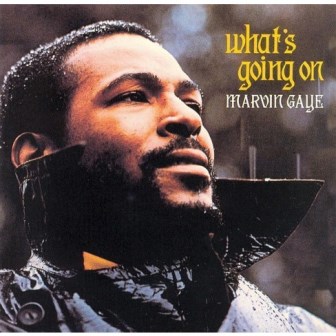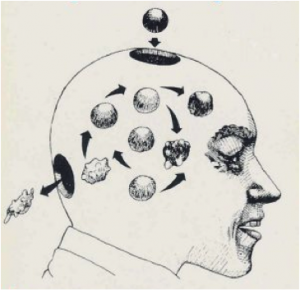Withstanding the Test of Time

Hearing a song on the radio that was released when I was a teenager often reminds me of a specific bygone year. For instance, …
For some popular songs it is more difficult to recognize when the song was released because the song has played throughout the decades. Marvin Gaye’s “Let’s Get it On” is such a song -- a classic that has withstood the test of time. The movie “The Wizard of Oz,” which has gone through multiple releases and remakes, also ranks as a time-tested classic.
Some concepts endure, and some do not. Some ideas become classic and some do not.
As I enter my 44th year of practicing physical therapy I am amazed at how many new concepts I have learned and how many I have ignored or forgotten. The illustration below from Roger von Oech, author of “A Whack on the Side of the Head“ (1983), illustrates that some new concepts are ejected or let loose and forgotten and others are kept.

During my career in physical therapy I have come upon many new concepts that have not withstood the test of time. I was taught that stretching exercises prevent injury. That stretching exercises make you more flexible, and the more flexible you are the faster you are. That good physical therapy requires a referral from a licensed physician. That deep heat ultrasound therapy speeds the healing process. That electrical stimulation of muscle while at rest can strengthen muscles. That strengthening exercises for the thigh muscles is good for arthritis of the knees. That if you have musculoskeletal pain, you should do stretching exercises. That if you have heel pain you should do stretching exercises. That isokinetic and/or nautilus resistant/weight machines are better than free weights to gain strength.
Evidence over the long term, however, shows that the above statements are false or no better than half true. These concepts have not withstood the test of time.
In the sixties Robin McKenzie a Physical Therapist shared a new system encompassing diagnosis and treatment of spine and extremity pain not on anatomical basis, but on identifying the direction of movement that elicits or provokes symptoms. His system uses primarily self-treatment strategies and minimizes passive treatment procedures. Parts of Robin’s movement analysis system have withstood the test of time. Systematic reviews and meta-analysis have shown the method to be effective in management of acute pain problems, but not for chronic pain problems. His method is popular and used worldwide. Movement system analysis was based on plausible theory, and over time evidence was gathered using prospective randomized clinical trials proving its effectiveness. Reflecting back when I was introduced to this method in seventies, I thought it was cool; I liked the idea of engaging the patient in self-care. At the time I had no thoughts is this idea going to withstand the test of time. Now when I am presented with new concepts, I strive to have a healthy skepticism. The Declaration of Independence says “we hold these truths to be self-evident”. I am comfortable asking what is the evidence?
But I have learned many concepts that have proved to be time-tested. I learned how to look for the best quality evidence to determine what is the best diagnostic test, or intervention. I learned how to be skeptical of salesmen purporting that the equipment or service they were selling was the best thing since sliced bread, and that I needed to hop on the bandwagon. I learned that diagnostic tests and interventions are more likely to withstand the test of time if they are based on sound theory. I learned it is important to be comfortable with ambiguity and uncertainty because some beliefs may fail the test of time. I learned that when a patient is actively involved in his or her health care, the treatment is more potent than when a patient seeks passive interventions such as massage, manipulation and modalities. I learned to embrace mistakes, to learn from them and not to make the same mistake again. I learned it was a good idea to get rid of ideas that did not make sense.
Looking back, I wonder why I used time and resources to study concepts that fizzled out over time. When we see something new, how do we determine whether it will become a classic? How do we predict a winner?
Whether a song, movie or novel becomes a classic depends largely on its popularity over the years. In medicine popularity should not be the only factor in determining whether the new concept or idea will withstand the test of time. Early in my career EMG biofeedback was very popular. Therapeutic deep heat ultrasound was very popular. Deep friction massage was very popular. Requiring a physician’s prescription in order to receive physical therapy was popular. These concepts have basically turned out to be trends that lacked lasting power. New physical therapy techniques that are currently popular, such as dry needling, Graston Technique, kinesio taping and Postural Restoration (PRI) may or may not turn out to be winners in the long term.
Despite years of experience, I still struggle to recognize whether a new concept will withstand the test of time. However, I do believe that a concept’s endurance depends on several factors: Is it based on sound theory? Is quality evidence available to support the concept? Is the evidence based on objective data? Is the concept clinically significant and does it solve an important problem?
I am eager to hear what you think are the generic factors that determine whether a new idea will withstand the test of time.
Damien Howell Physical Therapy – 804-647-9499 – Fax: 866-879-8591 At-Home, At Office, At Fitness Facility – I come to you, I do home visits Damien@damienhowellpt.com
